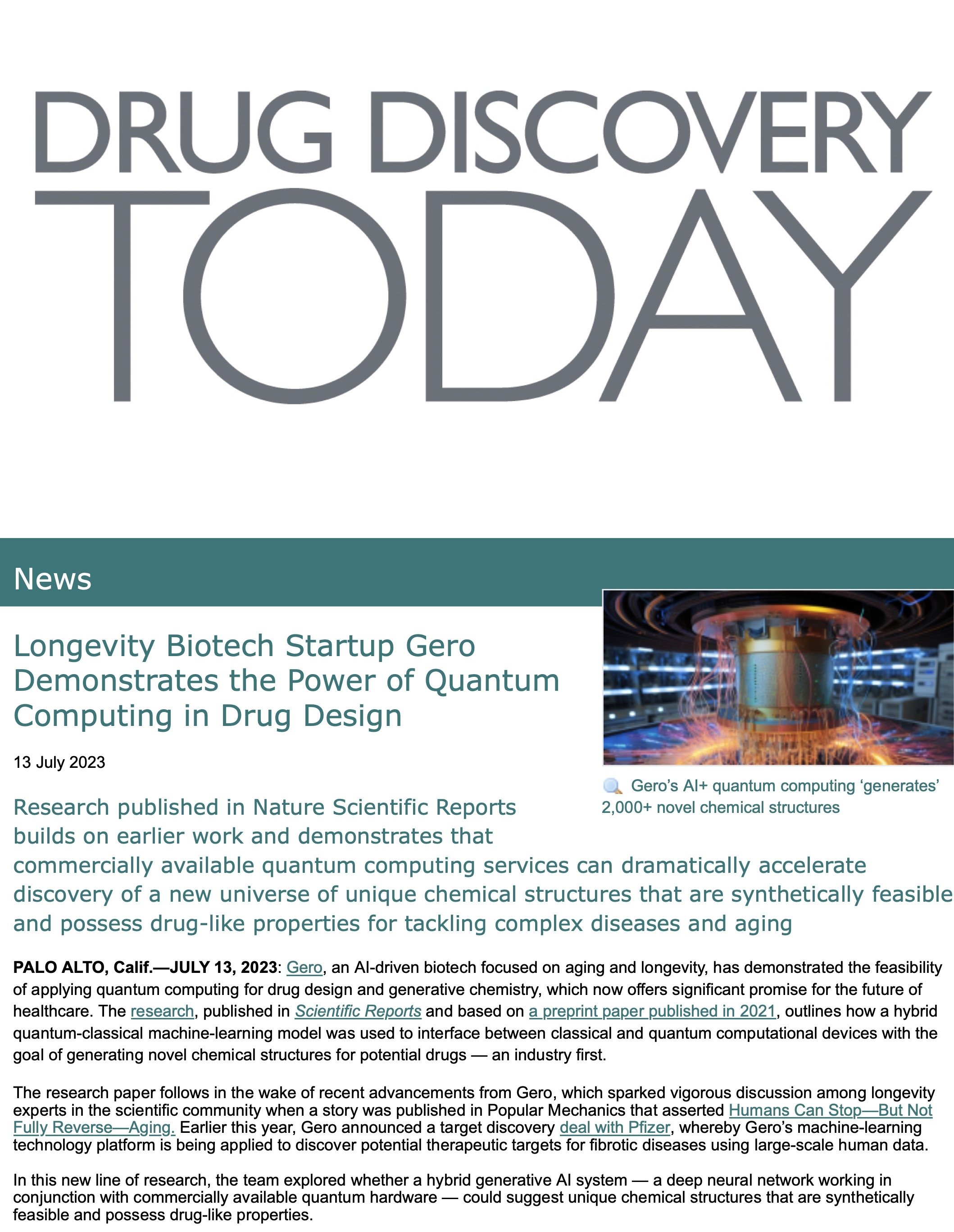Gero is applying AI to crack the code of complex diseases and aging
Literally dozens of biotech companies have launched in the past 3 or 4 years and applying AI to tackle the immensely complex task of drug discovery. Indeed, we’re now starting to see progress with the use of AI in the form of novel drugs that are just entering clinical trials. Well, we need more!
Meet Gero
A diverse team of physicists and bio-engineers that is applying physics-based generative models on massive human health record datasets, combined with AI-guided drug design, to develop meaningful interventions for aging and age-related diseases.
Gero has a unique value proposition for pharmaceutical companies that are looking to identify new technology platforms for in-licensing and co-development. Gero’s drug-development platform enables target discovery against chronic age-related diseases directly in human data. Current genetics-based approaches to target discovery rarely lead to new approved therapies for chronic diseases, which are all interlinked via aging. Gero’s approach allows separating the effects of aging from the effects of diseases enabling human genetics-driven target discovery for chronic and age-related diseases.
What makes Gero’s approach unique?
First, the scientific team has trained very large health models (VLHMs) on a massive dataset of longitudinal, real-world medical records. These models are unsupervised and can predict future health outcomes similar to how large language models (LLMs) anticipate the next word in a sentence.
Second, quantum computing. The vast structural space of all possible drug-like molecules presents a monumental challenge in drug discovery. The number of realistic drug-like molecules is estimated to be between 10^23 and 10^60. To date, only about 10^8 substances have ever been synthesized.
The size and complexity of this uncharted chemical diversity space requires innovative tools for the selection of novel, biologically active and, at the same time, synthetically accessible molecules waiting to be turned into future drugs. Molecules are archetypical quantum objects and hence quantum computers are naturally suited for solving complex quantum chemistry problems.
How quantum computing cracks the code
Gero’s research, recently published research in Nature Scientific Reports, highlights two important conclusions:
Hybrid quantum-classical machine learning is excellent for drug-discovery applications. The team demonstrated that hybrid architectures that combine quantum computers with deep classical networks indeed have potential for drug-discovery applications. They built a compact and powerful model, small enough to fit on a state-of-the-art D-Wave quantum annealer, and trained this model on a subset of the ChEMBL dataset of biologically active compounds.
We can generate novel chemical structures using a commercially available quantum machine. Gero’s hybrid quantum-classical model generated 2,331 novel chemical structures with medicinal chemistry and synthetic accessibility properties in the ranges typical for biologically active molecules from the ChEMBL dataset.
CEO Peter Fedichev
Peter sees enormous promise for the application of quantum computing to address lifespan and healthspan.
“Our goal is to slow down or even stop human aging. This is no small feat and will require intense effort and the fusion of probably yet unknown amounts of technology borrowing from the science of complex systems, modern AI and machine-learning technologies, vast biomedical datasets, and revolutionary bioengineering,” he added. “Recognizing the potential of quantum computing and quantum machine learning — a rapidly advancing field with immense promise — we have incorporated these into our arsenal, setting the stage for much-needed advancements in drug design against aging.”
Gero is leading the charge to create effective therapeutics to combat chronic diseases typically associated with aging — and to slow down human aging itself. Unlike most AI-powered drug-discovery biotechs, Gero was founded with the goal of halting aging by studying it from first principles in human data, and by combining the potential of deep neural networks with the physical models to study dynamical processes and understand what drives a disease.
Earlier this year, Gero announced a research collaboration with Pfizer and is in discussions with other pharmaceutical companies that are evaluating age-related diseases as a growing market. The large health model developed by Gero was trained to differentiate the specific effects of aging from the effects of diseases to potentially revolutionize genetics-driven drug discovery against most common conditions. This positions Gero to "hack aging" and extend the lives of all humans.
ZINGPR’S CAMPAIGN SCORED EXCELLENT MEDIA COVERAGE
ZingPR used two announcements to introduce journalists to Gero and invite them to interview the team. These results have laid the foundation for future projects that the team is planning.











